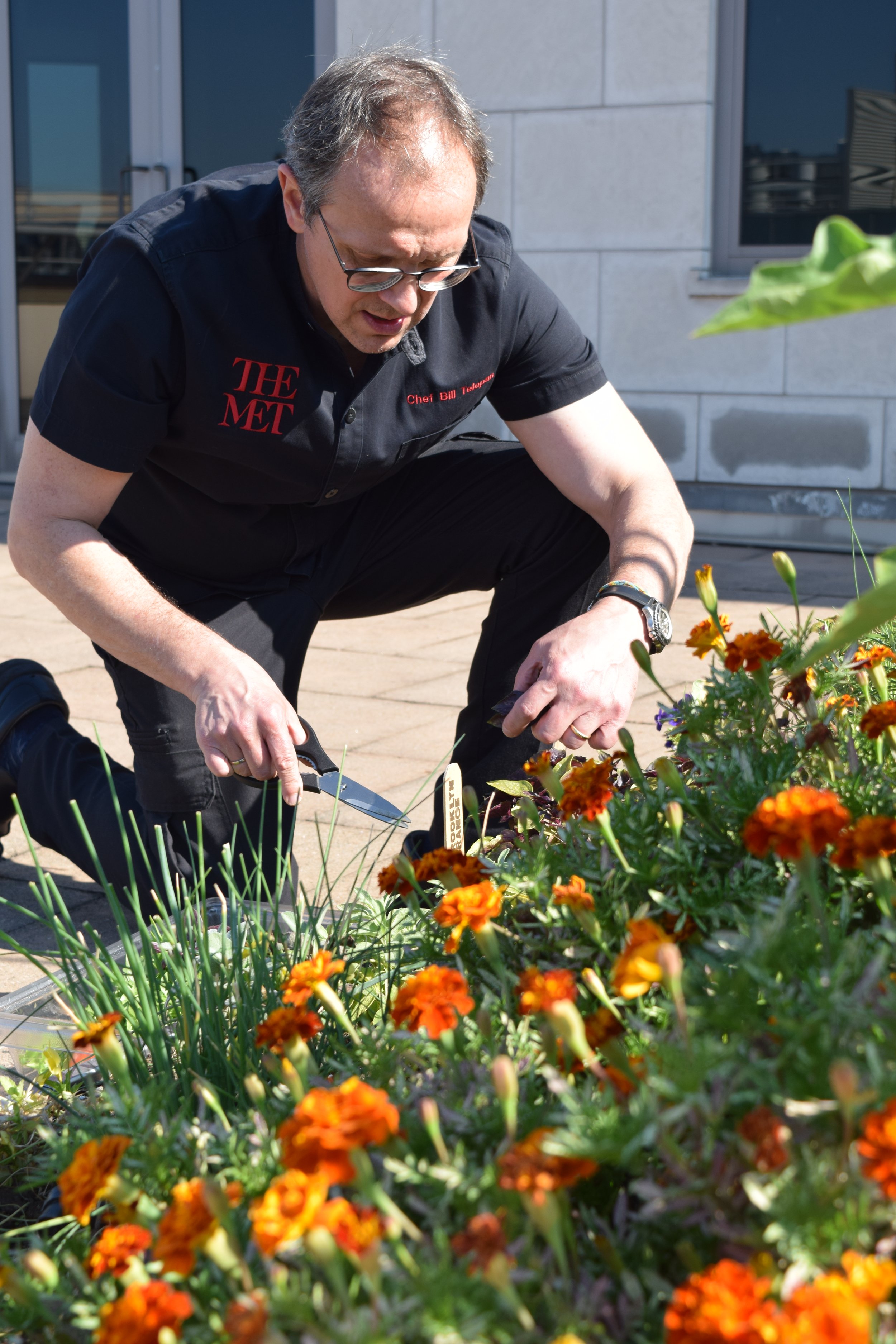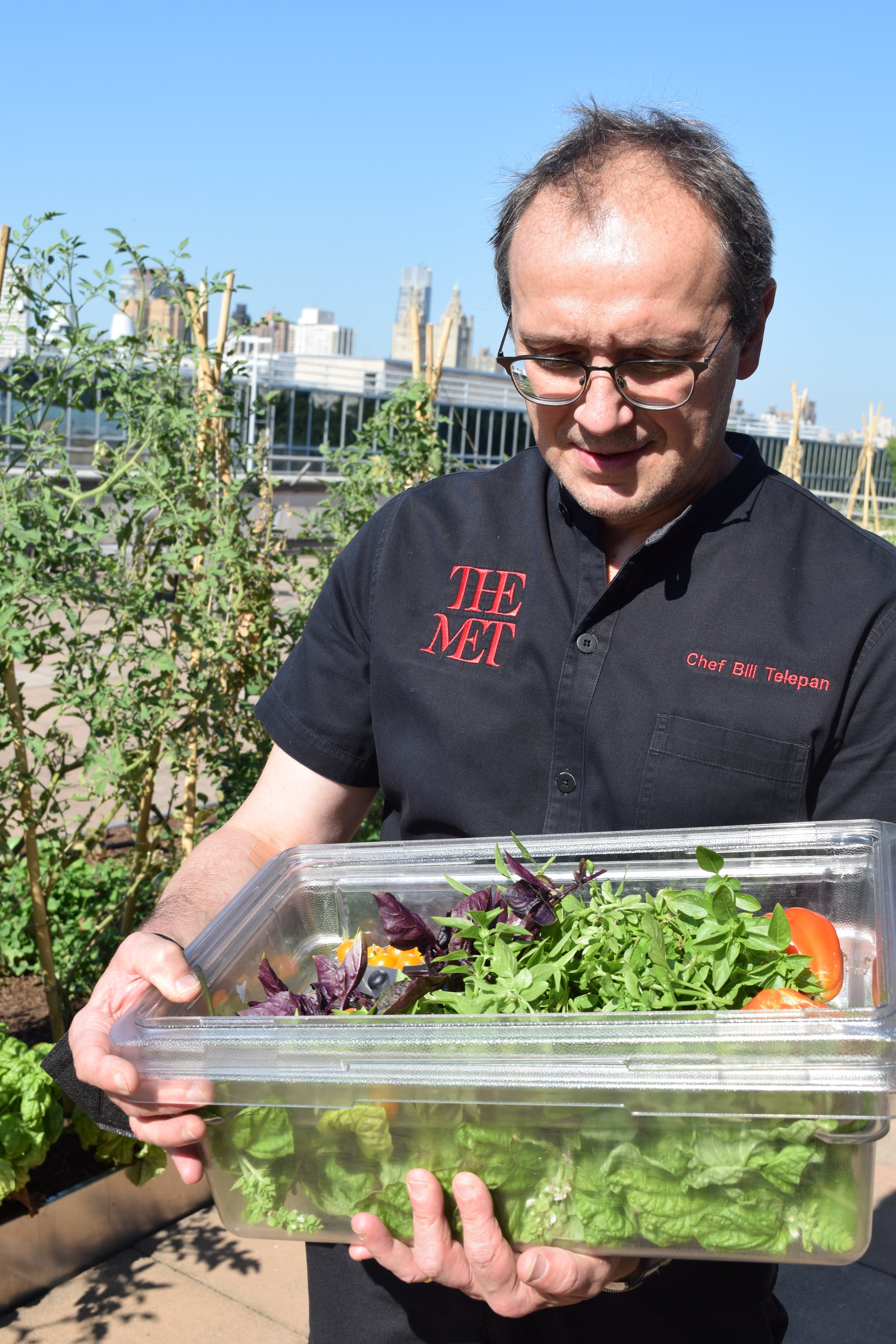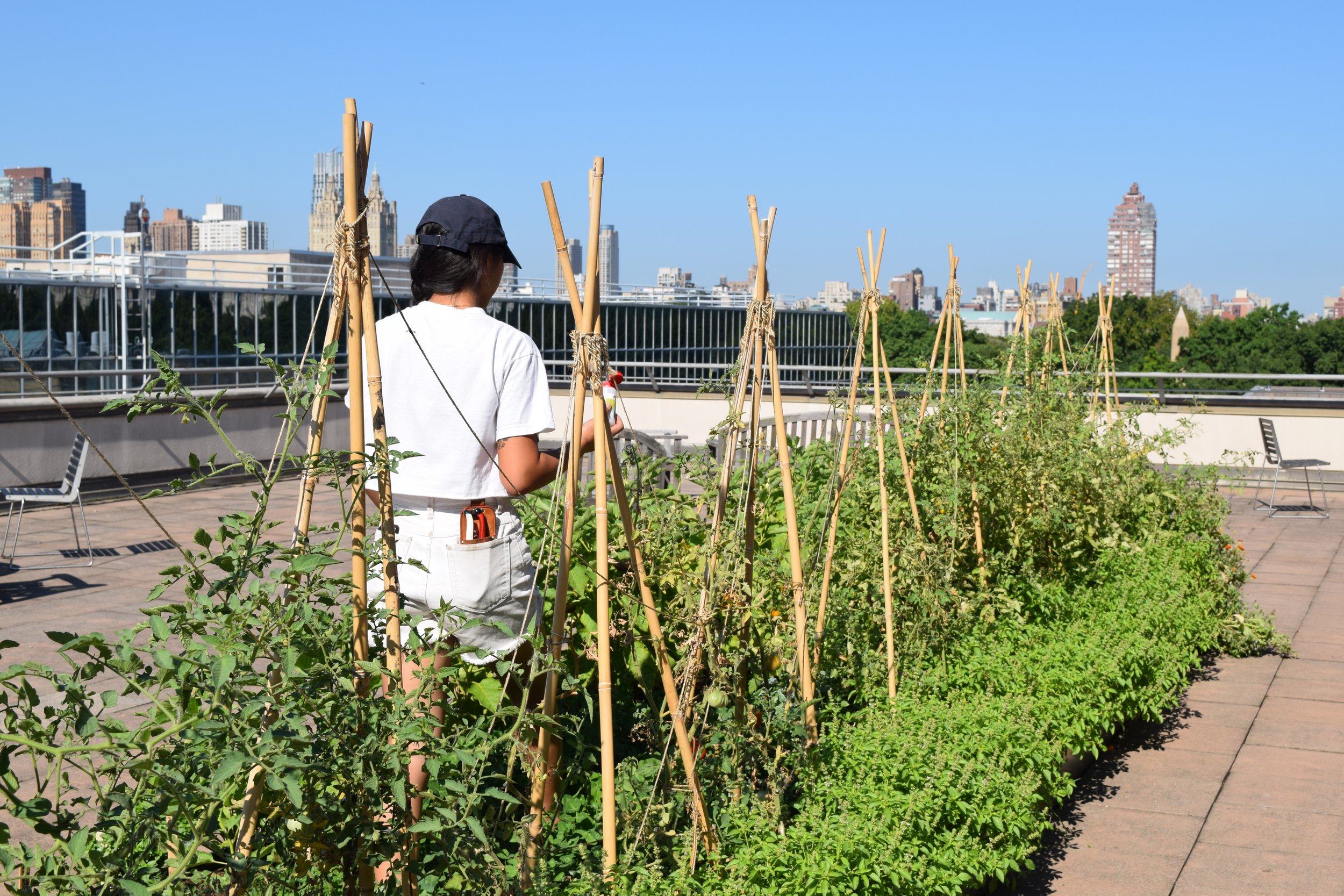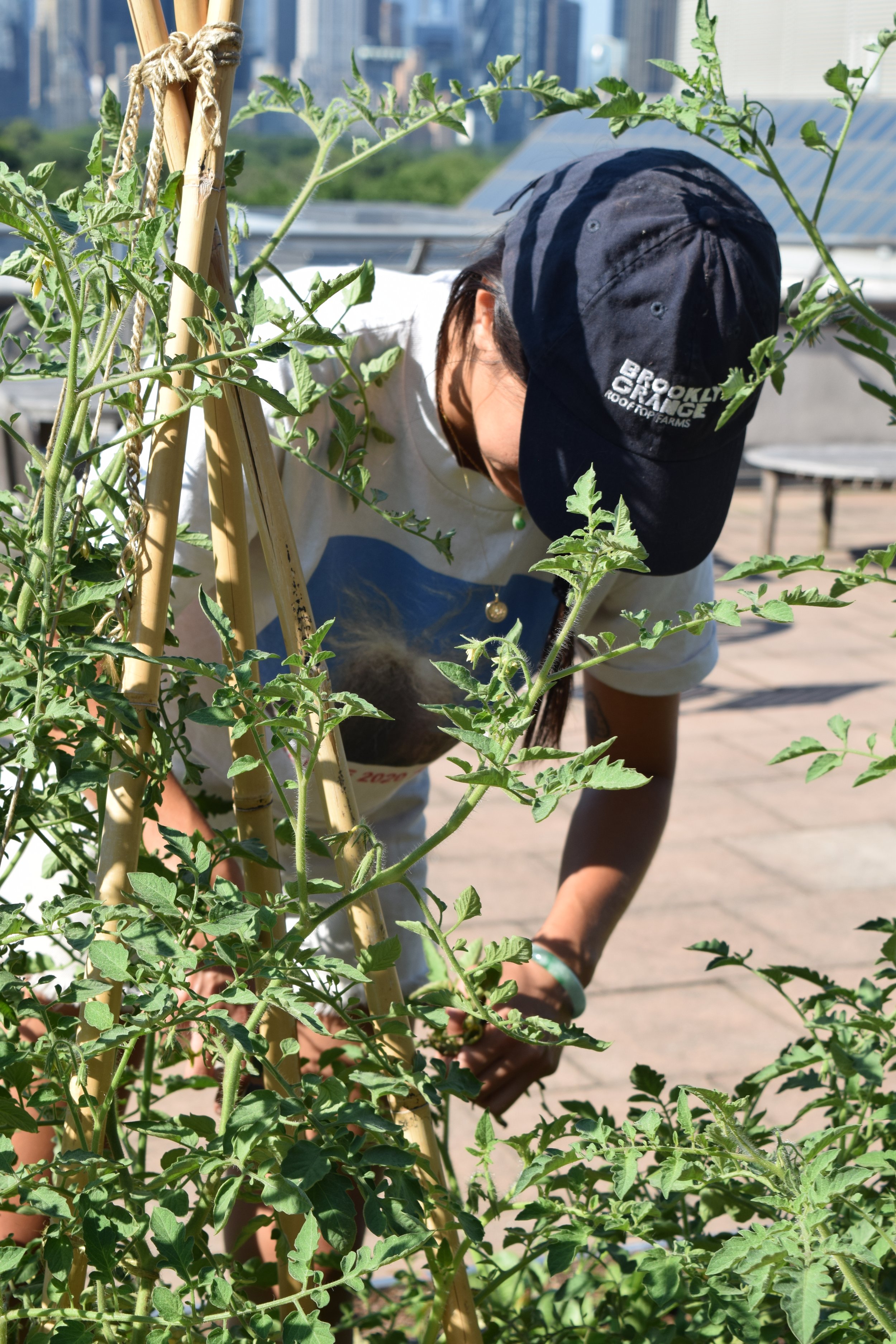IN CONVERSATION WITH CHEF BILL TELEPAN
Chef Bill Telepan has long been a leader in supporting local farms and purveyors who prioritize the environment. Throughout his career, he has created many of the iconic dishes that helped our foodshed clinch its rightful place as a world-class agricultural region. These days, Chef Bill is the Culinary Director for Bon Appetit Management at The Metropolitan Museum of Art, where he’s redefining what local sourcing looks like.
In 2021, our Design/Build team installed a 300 sq ft green roof vegetable garden on top of the Met featuring zucchini, tomatoes, basil, edible flowers, herbs, eggplant, kale and more. In collaboration with Chef Bill, our team of edible specialist gardeners curates a crop plan and maintains the garden serving the Met’s culinary program. We are honored to be growing food for this luminary and are thrilled to be sharing his perspective here on the blog!
So, Chef Bill: you spent your early years cooking in kitchens that were temples to extravagance. The culture of waste reduction you pioneered at your own restaurants might seem like a big departure from that decadence. Can you describe what motivated you to champion this different kind of sourcing, and cooking?
The culture of waste reduction was always in the thoughts of the chefs at these “temples”. We would always look for ways to use up everything; whether it was in other dishes, stocks or staff meals. It was frowned upon to waste.
Your menus were some of the first to offer vegetables a starring role, without relegating them to a separate “vegetarian” category. And, the veggie burger you developed in support of Meatless Monday converted many a non-believer. What’s it been like as an early adopter of what the kids today call plant-based eating?
As an avid buyer at our local greenmarkets and with farmers, I always look for ways to use more vegetables. In fact, when I think about putting my menus together, I always think about what vegetables are in season and start there. The Meatless Monday campaign helps us think about reducing meat consumption to help the environment. There are many who raise livestock in a thoughtful way, and we should support them too! But getting more vegetables into our meals is not only good for you, but good for the environment and tasty!
Tuscan Basil — a cultivar native to Tuscany growing on the roof of the Metropolitan Museum of Art.
And as a vegetable lover, how’s it been having your own rooftop garden at the museum?
It’s the BEST!!! I’ve always wanted to be able to have a garden; not just at home (hard to do on the 8th floor in NYC with no balcony) and one connected to my restaurants. I am so grateful for the support of the Met in allowing us to have one on their roof. And it also dictates our menus. From a tomato pasta dish in the main dining room, to our salad bars in the staff cafe, to the marigolds in a ceviche in the Member’s Lounge. It really helps us with our creativity.
You have done so much to educate the next generation of chefs, via your work as Director of Sustainability at Institute for Culinary Education – and the next generation of consumers, via your work at Wellness in the Schools. Can you talk a bit about your choice to dedicate so much of your life to education? What are the lessons you most hope to pass on?
My family and I have been very fortunate to be fed well all of our lives, and I always thought that everyone should be. A hungry child can not perform well in school. And if they can’t perform well in school, how do we break the cycle of poverty without children getting a good education. So I want all kids to have access to healthy meals and active recesses. These are lessons they can use their whole lives. It should be a right, not a privilege . As for the role at the Institute for Culinary Education, that was a way to bring the ideas of sustainability to culinary students,; buying locally, reducing food waste, the environment. Things that aren’t normally brought up in a culinary school setting. so these students will bring these ideals as they move on in the profession.
The culinary world has been a leader in the environmental sustainability movement because our work relies on agriculture. It’s almost expected at this point that food businesses have a “farm-to-table” focus. How do we get more fields to practice intersectionality, and integrate environmentalism into their core missions?
Since working at the Met, our menus tend to be more global and what I realized is every cuisine is local and seasonal in thought using ingredients indigenous to their locale and climate. As for businesses and institutions, I know at the Met we talk about it all the time. We have changed packaging, recycle and have talked about composting. I think all businesses are starting to think like the Met. I think the environment and climate are so important, more than ever and we need to react fast!
While the garden on top of the Metropolitan Museum of Art is not accessible to the public, vegetables can be enjoyed in dishes served in the Met Dining Room.







